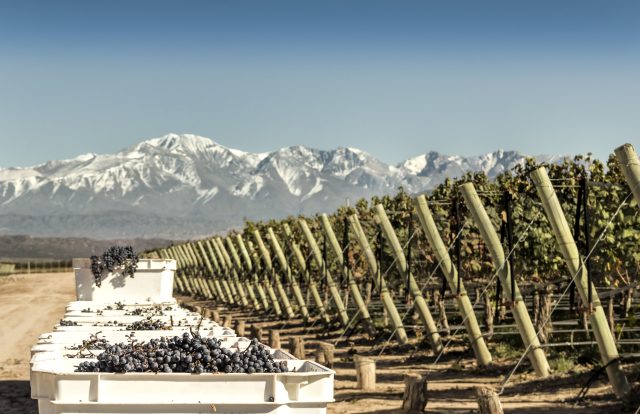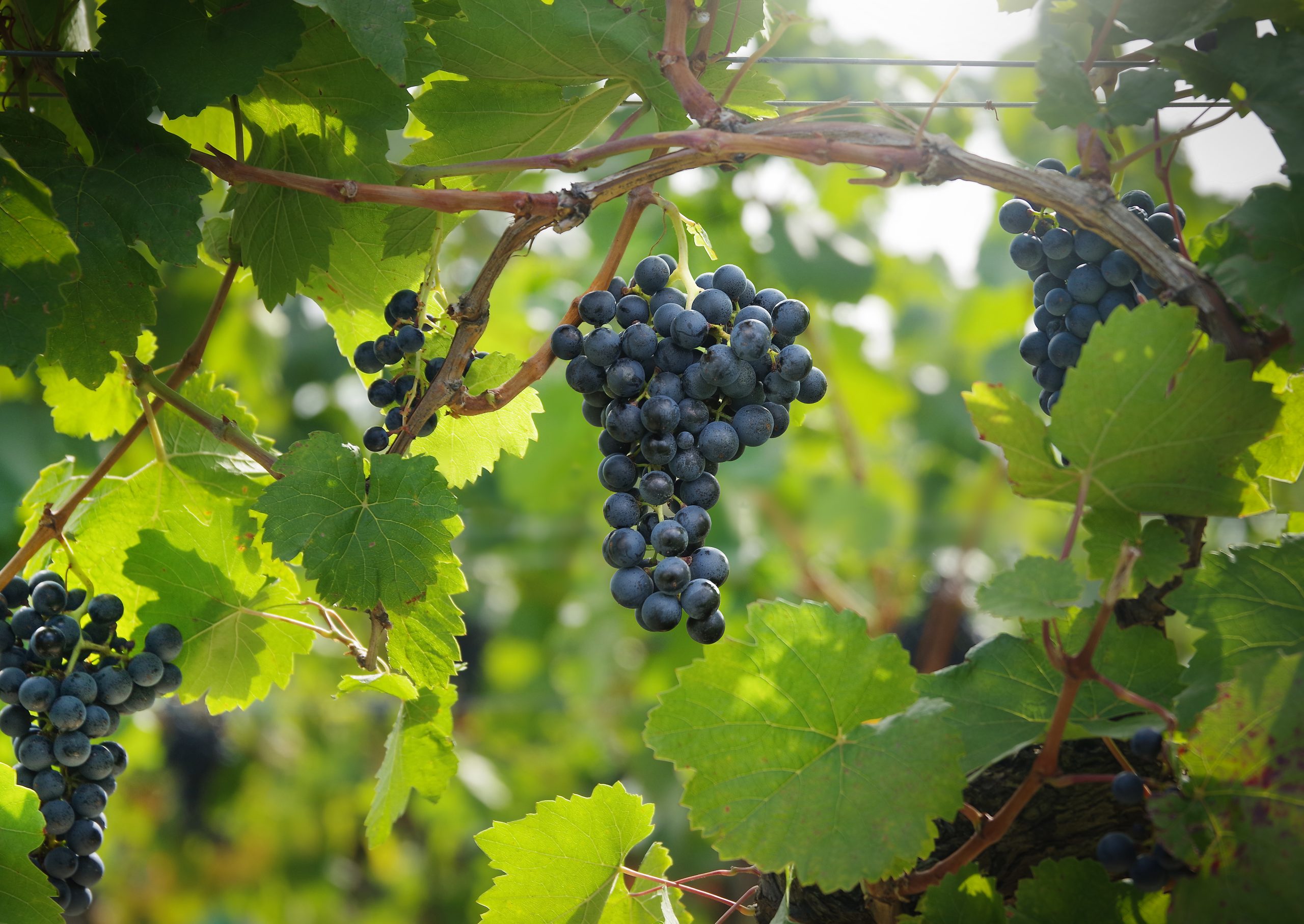Argentina’s 2023 harvest: The year everyone wants to taste
Argentinian winemakers endured many challenges during the 2023 harvest, but many are suggesting that the wines produced that made it through could be some of the most expressive and complex yet. Jessica Mason reports.

Watching Argentina’s 2023 harvest has been a tumultuous ride with many twists and turns. Not just because the weather offered the lowest yields since 1960 at just 1.437 billion kilos, but also because, while some producers worked tirelessly with the ebb and flow of nature, others regrettably lost out completely to the perils of such extreme temperatures.
One element that has been consistent when discussing the recent harvest however is the fact that it has been a true test of oenological prowess, perseverance and determination. Indeed, overcoming obstacles and tackling challenges head-on is an Argentine skill. In fact, it may even result in a vintage like no other — the harvest that almost never survived. Where complexity meets viticultural pzazz. Or, rather, put simply: The year everyone wants to taste.
Diana Bellincioni, head winemaker at Estancia Los Cardones in Salta describes it perfectly, stating that “the 2023 harvest was challenging” owing largely to “late frosts compromising grape yields throughout the country”. But, she observes, “on the flip side, the quality was excellent, resulting in expressive, complex wines with good acidity”.
A seasonal hardship which, once endured, then began to reveal itself to be worth all of the effort and this from the most northern climes.
Bellincioni insists: “We are truly satisfied with the quality achieved this year and believe it will be a vintage of exceptional wines in northern Argentina”.
What is also becoming clear is that Argentina is perhaps finally seeing the last of the extremities of the sporadic climate phenomenon known as La Niña with this being the final tail flick of such perilous weather that has whipped vineyards for some time now.
As the arduous frosts attacked the majority of vineyards and, even when budding had seemingly reached its safest point, many vines were suddenly lost within one cold night.
Somewhat remorselessly, La Niña did not discriminate — hitting gentle slopes and mountain vineyards with an almost cruelly casual and unpredictable ease while other wineries escaped unscathed wondering, with heightened readiness, when it might be their turn.
Elefante Wines winemaker Juliana Rauek points out that there were still a few distinct differences that certain zones across the nation experienced. She explains: “As a general concept, the 2023 harvest in Argentina was marked by frost, which lowered yields,” but admits that “however, Pedernal, in San Juan where we grow our grapes, did not suffer frost and had a normal harvest” a blessing she is not complacent about whatsoever.
According to Rauek: “A plant with all its canopy and a good amount of bunches could withstand the heat waves that was the second important climate event of the 2023 harvest.”
So, for Rauek, “it was a spectacular year, very healthy clusters, with very good natural acidity despite the heat” and that’s what everyone is marvelling about — the natural acidity and layered juiciness that gives way to unsurpassed vibrancy in the wines that made it through. For many, they were unsurpassed and Elefante was no exception.
Juan Pablo Murgia head winemaker at Bodega Argento echoes this sentiment and admits that 2023 is “without doubt this is one of the most exceptional harvests of recent years” which he believes is slightly connected to the low yields and observes that the “great quality has been driven by the concentration of polyphenols and aromas due to the low load of fruit on the vines”. Essentially, it is a harvest that everyone wants to taste. That boosted juicy complexity is something even the field workers are talking about — a marvel of a year.
Murgia explains how “the sudden ripeness” is “driven by the acceleration of accumulation of growing degree days and low yield” and this in turn generated “a sudden increase in sugar ripeness” which he calls “an excellent combination” because it “ensures wines that are deep, tense and have great character”. Words he has great pride in uttering. For someone who has such respect for nature, this is quite the accolade.
Moving through the country, Delfina Pontaroli, who works at Puerta del Abra, the first winery in Balcarce in the Buenos Aires Province, describes how water initially became scarce and then without warning, the dial switched the other way and the downpours began.
Puerta del Abra has established a reputation for high quality Albariños, Rieslings and Pinot Noirs – which for this harvest have been heralded as some of the best.
Partner Content
Looking at what the weather was up to, Pontaroli highlights how 2023 played out in the Balcarce GI, remembering how “it was a dry winter in relation to the historical average” and, additionally, “spring was also dry, with rainfall below the vine’s water requirement in the months of September, October, November and December”. But then everything changed, she recalls and adds that “from the end of January to the beginning of February, the situation began to reverse, leading to the other extreme of periodic rains”.
From Pontaroli’s perspective, “this caused the varieties to reach maturity at a different time than they usually do” and explained how “at Puerta del Abra, we start harvesting Pinot Noir before any white variety and we finish harvesting in mid-April, when what usually happens is that we harvest the white varieties first, then the Pinot Noir, and then the rest of the red varieties, during the last week of March the final harvest week”. Overall, she observes that this all resulted in “a year of exceptional yields and very good quality fruit with adequate health”. But it was not easy. In fact, it was a big team effort.
Pontaroli considers how, with regard to the frosts, which she confirmed were “severe” during October and November, recalls how her team was forced to “carry out successive frost controls through sprinkler irrigation” and admits that doing this ultimately saved the harvest.
All the hard work paid off. As she attests: “The resulting wines have good varietal typicity” and “lots of fruit” describing them as “elegant” and, in the case of white wines, “good natural acidity” while, in the case of the reds, “soft tannins” and “a good structure, but at the same time fresh and lively”. Is it straightforward and simple to describe the perfect harvest? Not really. Especially since there was so much effort behind the scenes. So much oenological nous on display. None of it was simple. All year, the winemakers were kept on their toes.
Meanwhile, according to Daniela Mansilla Galdeano agricultural engineer and viticultural advisor in the province of Córdoba who oversees the associative wine venture Patente X there was a different kind of concentration to the fruit and, even from size, shape and density of each of the grapes, it could be seen that the year of 2023 would be interesting.
She explains: “The harvest of red and white grapes in Cordoba in 2023 took place between January and April” and reveals that “the first harvested grapes were Viognier and Semillón in the northernmost and warmest part of the province during the first half of January”
As Galdeano points out, it was no easy feat and the “harvest concluded in mid-April in Calamuchita, around the coldest part of the province, with varietals like Malbec and Cabernet Sauvignon. In the Sierras Chicas — where Colonia Caroya is located — [the] harvest took place from mid-February until mid-March 2023”.
But there was so much gleaned from this year. As Galdeano observes how “generally speaking, grapes were smaller in size, with a good proportion of skin” and so anticipates that a lot of the “wines to be full-bodied, with good colour, aromatic, fresh, and with good alcohol content” adding that this also means they are likely to also “have ageing potential” — the absolute pinnacle for wine fans and collectors that want to see how far Argentinian wine has developed.
For Ana Viola, CEO of Bodega Malma and president of the Chamber of Wine Exporters in Patagonia, the 2023 harvest was one that will be remembered for all time.
Viola recalls: “We had a cold 2022 spring with frosts all over the country” and explains that “Patagonia is a region where frosts are the main threat to our crops and defence systems are a must” admitting that her team were so busy that they “had to activate” these defences “several nights” in order to save the vines.
Looking back, Viola points out that “the summer was warm and dry and, as in most regions of the country” and so “ripeness came earlier than usual” which stands out as a bit of an anomaly. Then, “during harvest time there were no storms or rain” but there was, she remembers “yet another test: another frost mid February, something very atypical”.
Viola describes how, much like other winemakers who lost out, “the yields reflected the frost phenomenon” and produced fewer kilos than previous years but then highlights how, more often than not, “healthy vineyards remain a characteristic in Patagonia” with the “natural acidity and high quality of the grapes” remaining a standard for the region.
As she understands it, the conditions through which the vines needed to thrive have produced something she thinks is nothing short of exceptional. Or, in her terms, a vintage that is likely to prove to be “outstanding”.
Indeed, as she attests: “The wines at this point are fresh, vibrant, clean and crisp with plenty of fruit and good structure. I think although we will have less volume, the quality will be outstanding” and hints that the varieties of note for 2023 include Argentinian “Chardonnay, Malbec, Merlot and, of course, Pinot Noir” which she admits are some of her “favourite 2023 wines so far”.
The verve that has been stated by the winemakers should go some way to indicating what the world can expect from the Argentinian 2023 harvest — a rare gem of a year. That when eyed on labels will become coveted and admired with a knowing nod. As everyone who worked with the vines will corroborate, it has not been an easy ride. But, goodness, how lucky we are with what made it through.
Related news
Strong peak trading to boost Naked Wines' year profitability




